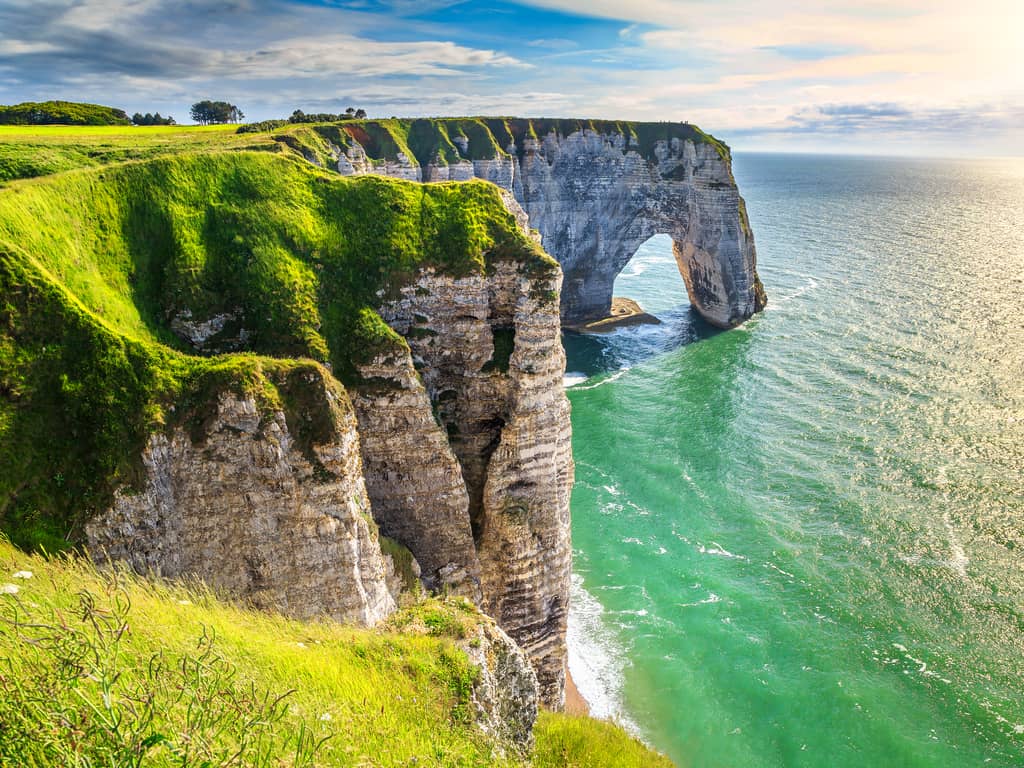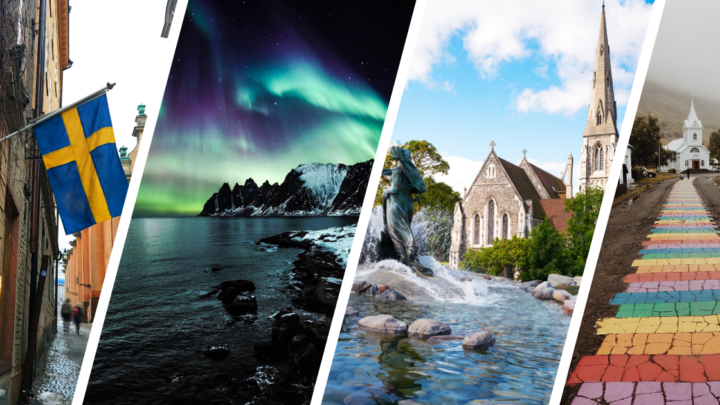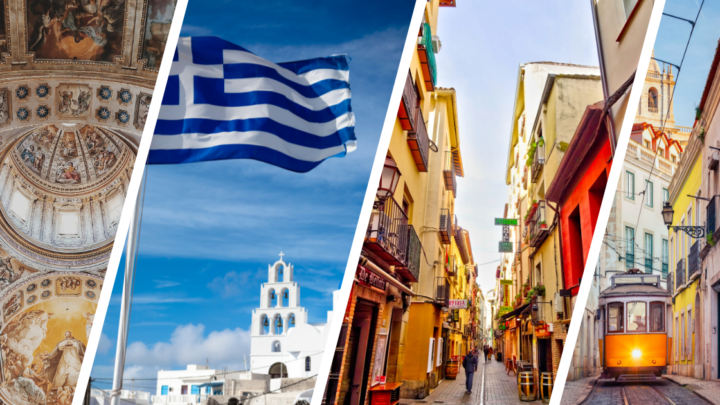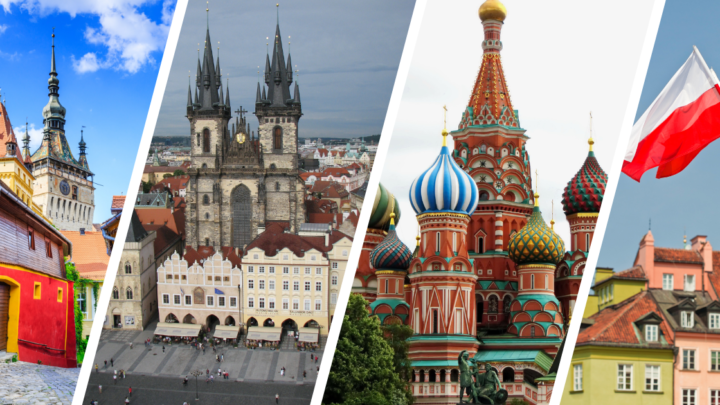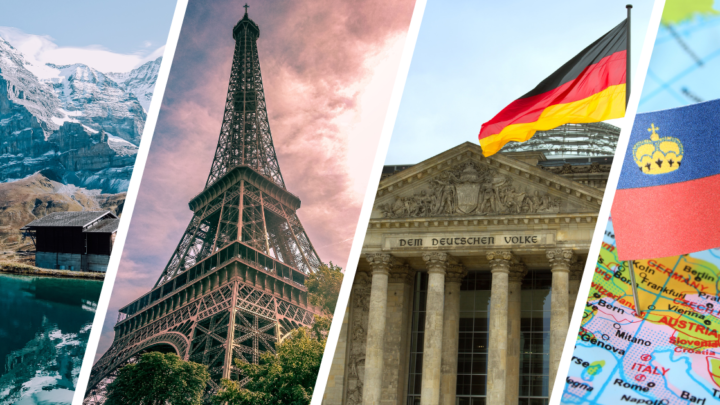Ready for some excitement? There’s a lot to do and see in Normandy, France. Check out our curated list of the best things to do in Normandy, France, and the best places to visit in Normandy, France, below. As a Web 3.0 travel startup, Wondrous Drifter aspires to make a huge impact on the world.
Table Of Content
- Abbaye de Jumièges
- Arromanches-les-Bains
- Barfleur Harbor
- Bayeux Tapestry Museum
- Caen Memorial Museum (Mémorial de Caen)
- Cathédrale Notre-Dame de Rouen
- Château de Caen
- Château de Fontaine-Henry
- Château Gaillard
- Claude Monet’s House & Gardens
- Côte Fleurie
- Deauville
- Étretat Cliffs
- Fécamp
- Honfleur Harbor
- Le Havre
- Memorial Museum of the Battle of Normandy
- Mont Saint-Michel
- Old Rouen
- Suisse Normande (Norman Switzerland)
- Explore Europe
Abbaye de Jumièges
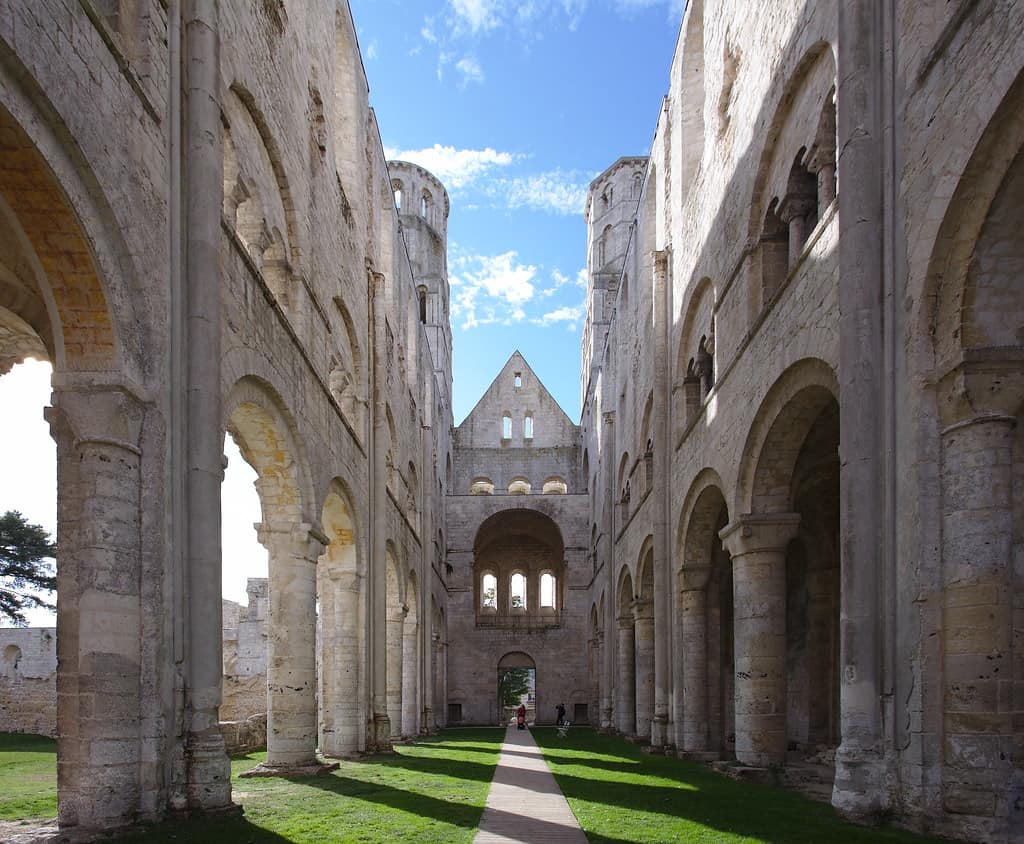
With a long history, the Jumièges Abbey is one of France’s oldest.
The roughly fifty-meter-high white towers of the abbey built in one of the loops of the River Seine never fail to astonish visitors and inspire admiration among those who come to see it.
It was established in the year 654 on a piece of woodland land given to Saint Philibert as a gift by the Merovingian King Clovis II.
When Jumièges Abbey was destroyed in the 19th century, it became “the most magnificent ruins in France.”
It gained a reputation as an outdoor destination infused with Romanticism because of its destruction.
They recently decided to make the abbatial house available to the public as part of their commitment to supporting the visual arts and hosting prestigious seasonal exhibitions.
Artworks from both medieval and contemporary periods are paired to create a dialogue between these two distinct art forms.
Start to see the beauty in ruins and begin your journey here!
Address: 24 Rue Guillaume le Conquérant, 76480 Jumièges, France
Arromanches-les-Bains
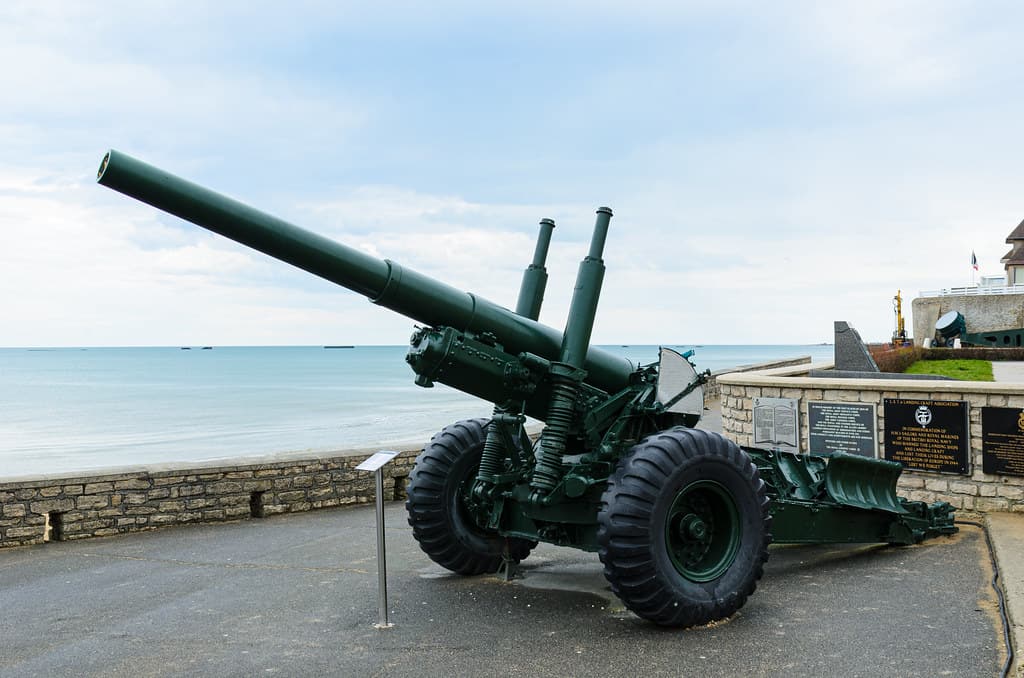
Witness how history comes back to life!
The D-Day landing beach of Arromanches is also known as Gold Beach.
It was successfully taken by the British 50th Northumberland Division on June 6, 1944, as part of a surprise offensive near Omaha Beach.
Following the events of D-Day, the liberation of western Europe is intrinsically tied to the coastal town of Arromanches-les-Bains, which is known for its thermal baths.
The Mulberry Harbors were constructed in Arromanches since the town lacks a natural harbor.
The Arromanches D-Day Museum has a stunning coastline view at the former harbor site.
The sand and sea at Arromanches are still littered with the remains of the artificial harbor.
The logistics and technical aspects of the Mulberry Harbors construction that were a part of “Operation Mulberry” are brought to life in the D-Day Museum in Arromanches, which is known as the Musée du Débarquement.
Exhibitions at Mulberry Harbors explore the realities of creating and using imaginary ports. At the same time, working models demonstrate how they function.
Visitors can also view a documentary film that includes World War II historical footage.
Many cafes and stores can be found on the Place du 6 Juin plaza, just a few blocks from the museum.
Unroll the history through their museum and enjoy the blissful beach simultaneously!
Address: Place du 6 Juin, Arromanches
Barfleur Harbor
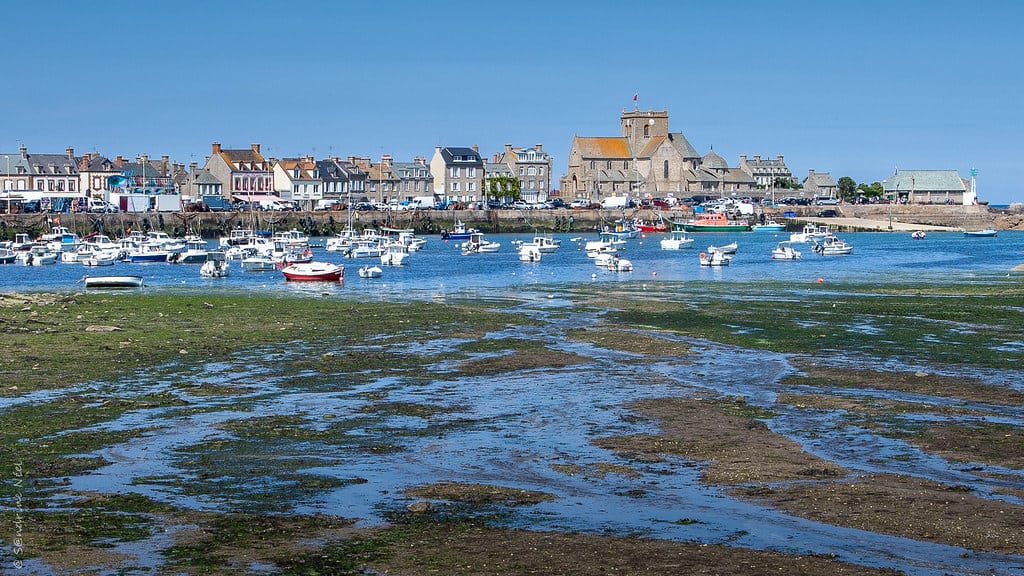
Sit on the benches in front of this lovely harbor and take in the breathtaking view!
Barfleur is a lovely fishing community that may be found on the northeastern coast of the Cotentin Peninsula in Normandy.
Towns with picture-perfect qualities have been included in France’s Plus Beaux Villages.
This charming harbor has deep historical ties to England and is located in the northeastern part of the Cotentin peninsula.
When you walk around Barfleur, you’ll be transported back in time to the Norman fishing port of yesteryear.
With a population of barely 700, this small town retains a sense of authenticity and is mainly unexploited by tourists.
Seeing the day’s catch being unloaded from colorful fishing boats evokes a sense of antiquity.
The flower-covered cottages enchant you if you detour off the main road.
There is a lot to see and do in this town despite its small size, so stop by and explore the incredibly gorgeous village in France.
Address: Quai Henri Chardon, 50760 Barfleur, France
Bayeux Tapestry Museum
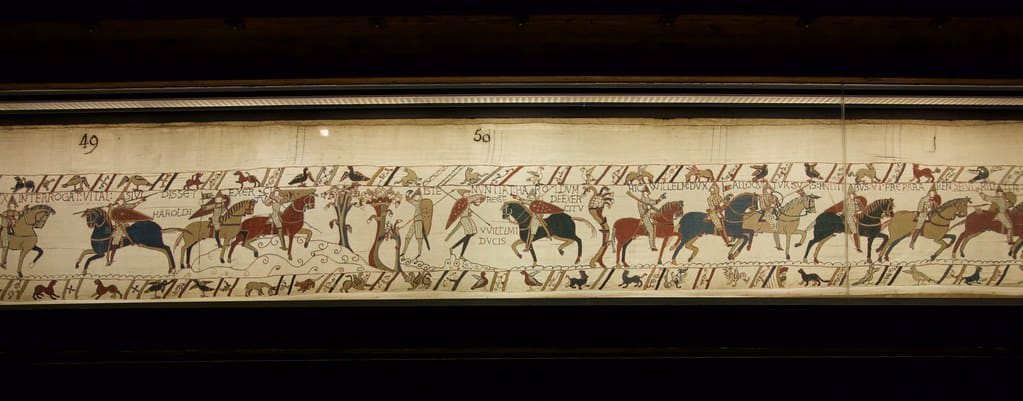
“Memory of the World”
The Bayeux Tapestry, which is currently on exhibit in the Bayeux Museum, is the primary reason for Bayeux’s widespread recognition (13 bis Rue de Nesmond).
Dating back to the 11th century and is considered a masterpiece of medieval art, it is an embroidery piece made using wool yarn in ten distinct colors.
As shown on the 70-meter-long Bayeux Tapestry, Duke of Normandy, also known for William the Conqueror’s conquest of England in 1066 through the Battle of Hastings, is portrayed.
Besides the Toile de la Conquête (Cloth of Conquest), the Bayeux Tapestry is also known as the Tapisserie de la Reine Mathilde (Queen Mathilda’s Tapestry, in homage to William’s queen).
The Bayeux Tapestry has been designated a UNESCO “Mémoire du Monde” (Memory of the World) for its historical significance and cultural importance.
Six hundred and twenty-three humans, seventy-five animals, and 37 structures and ships are depicted on the Bayeux Tapestry in a comic strip-like format, accompanied by Latin commentary.
Get to know the harrowing tale of the Bayeux Tapestry while you’re still here.
Address: 13B Rue de Nesmond, 14400 Bayeux, France
Caen Memorial Museum (Mémorial de Caen)
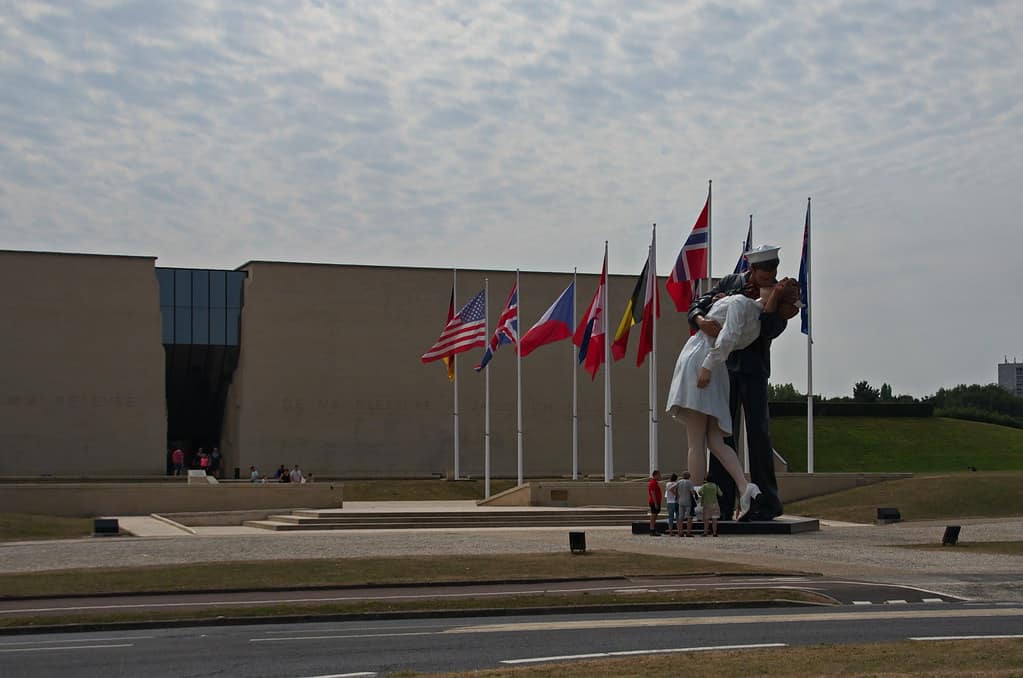
A great starting point for exploring the D-Day Memorials and Beaches in Normandy, France
When World War II began, Caen, a city in Lower Normandy bordering the English Channel, played an essential part in the Nazi occupation of the region.
About three-quarters of the town was destroyed during the Allied landings in June and July of 1944, but the old churches of the town were spared almost entirely.
The museum’s recent visitors praised the museum’s thorough and enlightening coverage of the war.
The Second World War, the D-Day Landings, and the Battle of Normandy are recounted in the Mémorial de Caen (Caen Memorial museum), which was established as a monument to the hardships endured by the people of Caen during the war.
General Richter’s Headquarters, which served as a command post during the German occupation of France, once stood beneath the Caen Memorial Museum.
An exhibition of contemporary art and also Human Rights Competition are only a few activities held at the center each year.
Visit Caen Memorial Museum on a guided tour or by purchasing a ticket.
Address: Esp. Général Eisenhower, 14050 Caen, France
Cathédrale Notre-Dame de Rouen
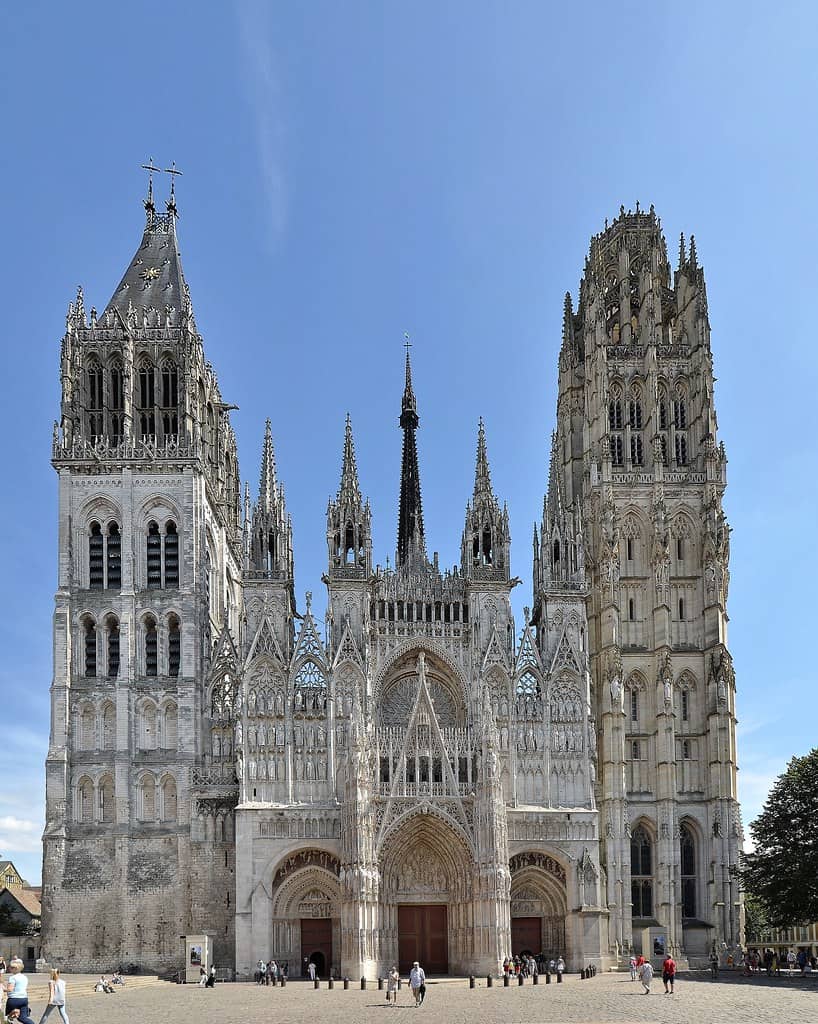
Get to know Gothic art’s history.
The ancient Episcopal palace, which dates back to the 13th century and is still a part of the complex, gives this somber cathedral in France its distinction as a one-of-a-kind structure.
This Gothic cathedral dates back to the 12th century and held the title of being the tallest building in the world for approximately five years, from 1876 to 1880.
Impressionist painter Claude Monet, whose works are on display at the Musée des Beaux-Arts de Rouen, was inspired to paint the scene multiple times by its alluring beauty in shifting light.
Numerous artifacts from the Normandy period include the tomb of Rollo, the first ruler of Normandy, and a grave containing Richard the Lionheart’s heart.
See the interior of this active Roman Catholic cathedral to examine its numerous components, such as the beautiful stained glass in the Lady Chapel, the transepts, and the ambulatory monuments.
In the summer, it’s a good idea to visit at night to catch the free light shows that are put on display outside.
Expand your knowledge of the various architectural styles and gain a deeper appreciation for them only here at the Cathédrale Notre-Dame de Rouen!
Address: Place de la Cathédrale, 76000 Rouen, France
Château de Caen
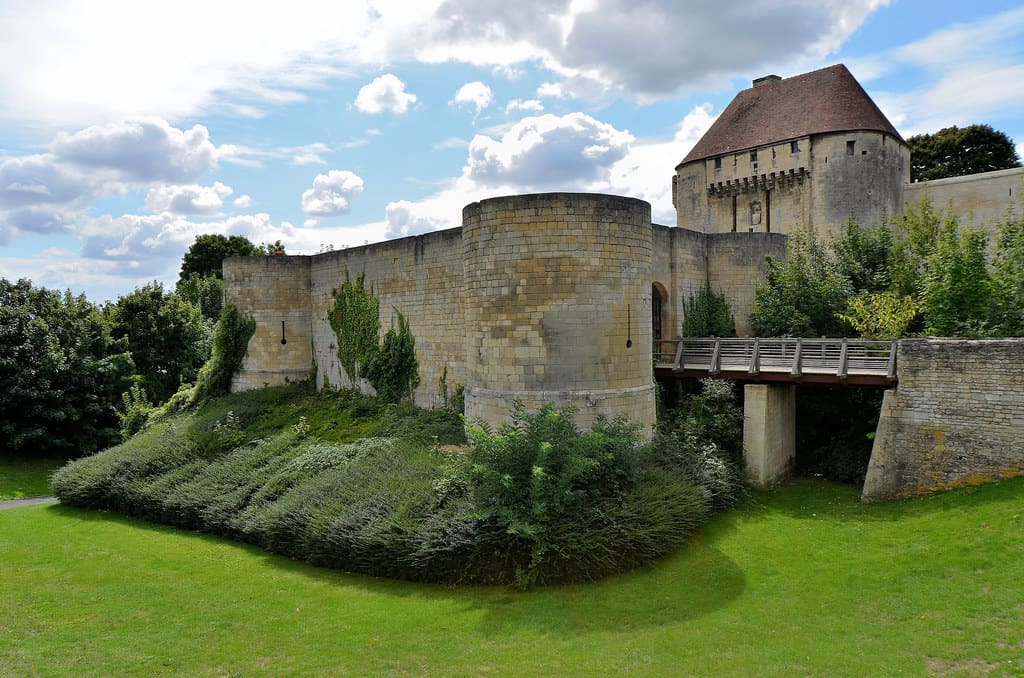
Offering you a café, picnic area, and outdoor activities!
Caen may appear to be a relatively young city, but appearances can be deceiving.
The Château de Caen is one of Europe’s most significant medieval monuments and an emblem of Caen’s heritage.
When William the Conqueror was King of England, he had this castle constructed in 1060.
There were several periods when Château de Fontainebleau was a royal fortification, including during the Hundred Years’ War and World War II, when it was used to house an infantry regiment.
The Château de Caen in Normandy has some of the most extraordinary castle defenses in Europe, particularly its ramparts.
The castle’s northern rampart has been repaired, and from here, tourists may take in views of Caen’s urban landscape.
Several projects to develop and maintain the castle ramparts have provided visitors with access to a number of belvederes and magnificent views of the city of Caen.
Check out Caen Castle, which will surely give you a dreamy fantasy feeling!
Address: 14000 Caen, France
Château de Fontaine-Henry
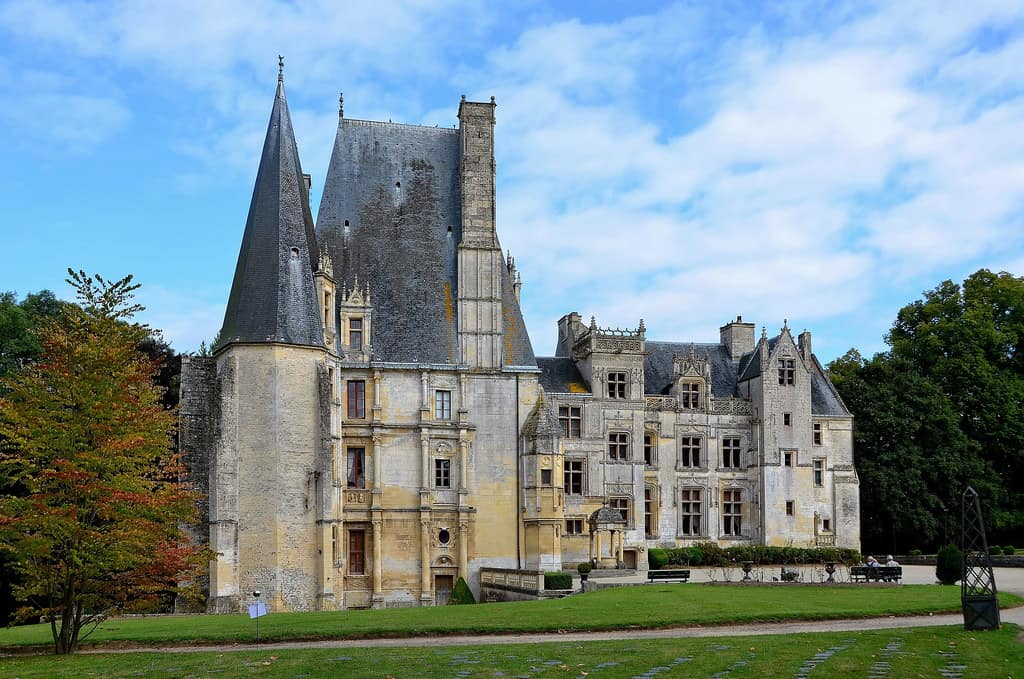
Take pleasure in the relaxing ambiance of the scenic Mue Valley in Lower Normandy!
The castle was constructed in the early 13th century and is now recognized as a Historic Landmark.
An aristocratic family who can trace their lineage back to the year 1200 owns and has quietly maintained ownership of the Château de Fontaine-Henry for many years and generations.
On occasion, the present owner of the château, the Marquis d’Oilliamson, hosts guests on guided tours of the property.
This magnificent château is a well-known example of architecture from both the Gothic and Renaissance periods. It features an impressive stone façade.
The sumptuous interior is adorned with exquisite paintings and furniture, some of which were created by renowned artists such as Titian, Correggio, Rubens, Mignard, and Rigaud.
A 16th-century renovation preserved a chapel built in the early 13th century.
Visitors to the château can take advantage of its extensive parkland, surrounded by woodlands and features strolling trails and traditional sports.
If you plan a visit, you can take a guided tour of the Château de Fontaine-Henry from mid-April through mid-September.
Address: 3 Le Château, 14610 Fontaine-Henry, France
Château Gaillard
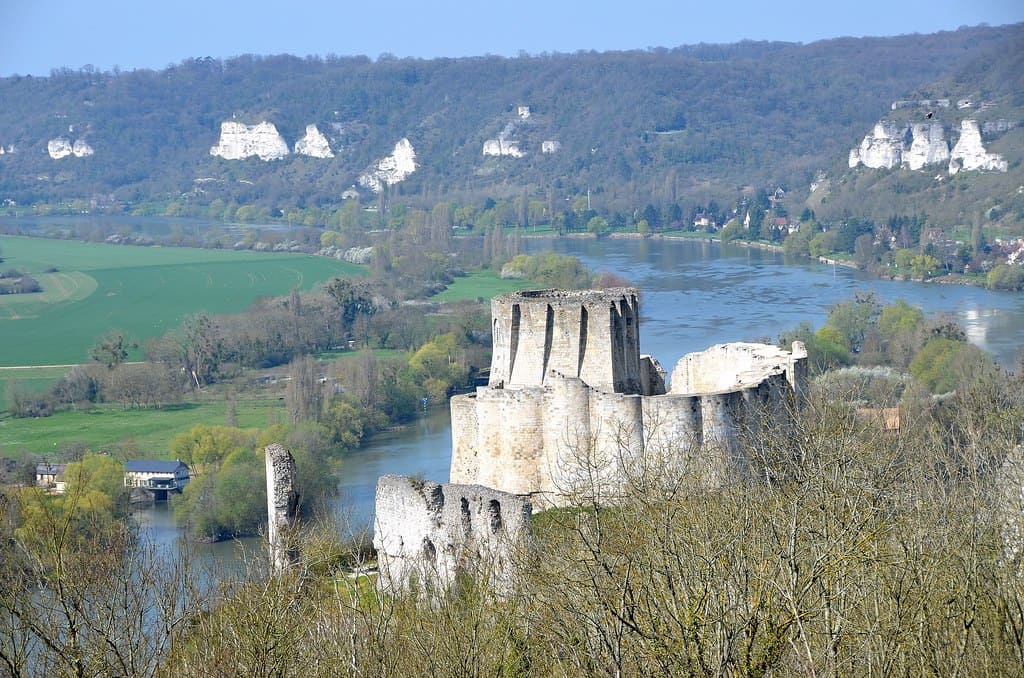
The ruins of a medieval fortress overlooking the Seine above Les Andelys
Richard the Lionheart is credited with building the castle known as Château Gaillard in the 12th century on the Andelys cliff in France, which overlooks the Seine River.
During the centuries that followed, it was fought for by the French and the English, but ever since 1449, it has been firmly controlled by the French.
Even though it was destroyed in the 16th century, a significant amount can still be observed.
This includes the majority of the keep and the inner bailey as well as substantial portions of the outside walls.
By 1573 rolled around, the castle had long since been reduced to an uninhabitable ruin after being pillaged for its stones to be used as construction materials.
Additionally, it is notable for being one of the first castles in Europe to implement the usage of machicolations.
Recent visitors were mesmerized by the fortress’s fascinating past. Others praised the scenery and suggested that visitors pack a picnic lunch to enjoy on the estate’s lawns.
Make sure not to overlook this spectacular castle!
Address: 27700 Les Andelys, France
Claude Monet’s House & Gardens
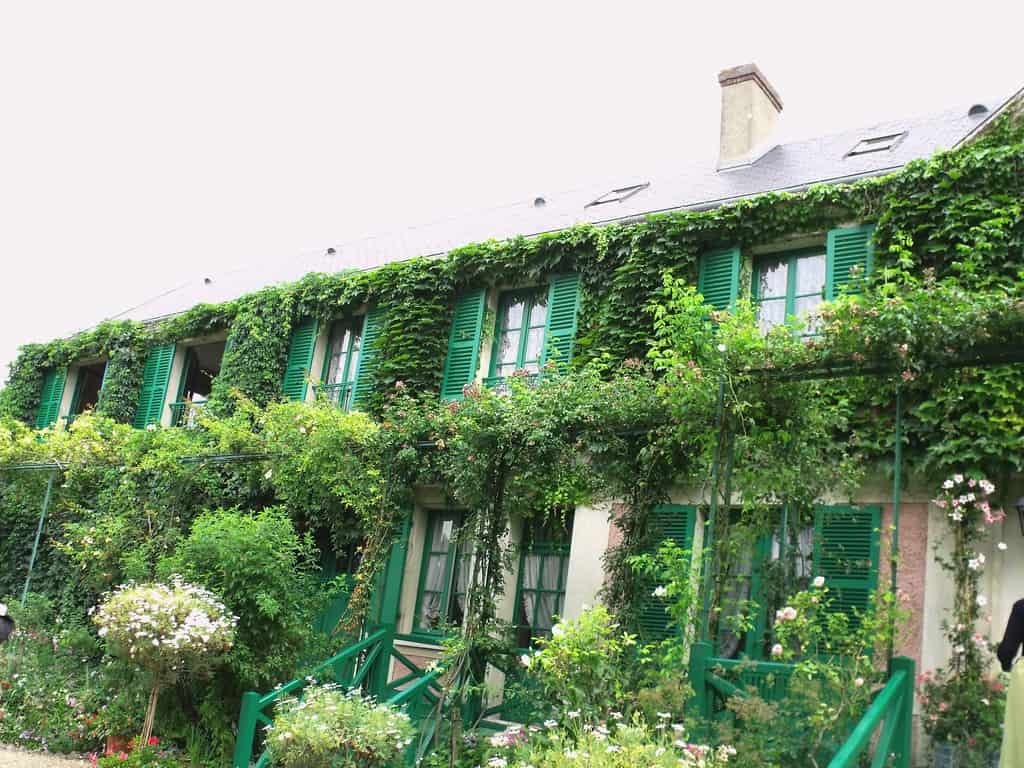
Have a relaxing moment with Claude Monet’s House & Gardens!
It was here at Giverny that Claude Monet and his family settled in 1883 and where the artist would spend the remainder of his life.
The Impressions Museum is bordered by a meadow and features a magnificent garden with a Monet-style design.
Le Jardin d’Eau (Water Garden) is located on the opposite side of the property and features a Japanese bridge and a waterlily pond surrounded by weeping willow trees.
Monet’s Water Lilies series of paintings featured the water garden.
Monet worked on various sections of this garden for many years, capturing its beauty with his delicate brushstrokes.
The Musée de Vernon, located in Vernon (approximately a 10-minute drive away), houses several Monet masterpieces as well as works by other Impressionist painters (who belonged to the Giverny colony of painters).
It’s not just a House & Garden; it’s an attraction with lots of nearby attractions!
Address: 84 Rue Claude Monet, 27620 Giverny, France
Dreams are too important to leave on the table. For the full list of countries to visit around the world, visit our traveling the world guide. The USA has to be on your bucket list when you wander around the world. Interested in a truly American adventure? You have to check out the what are the best states to visit in USA.
Côte Fleurie
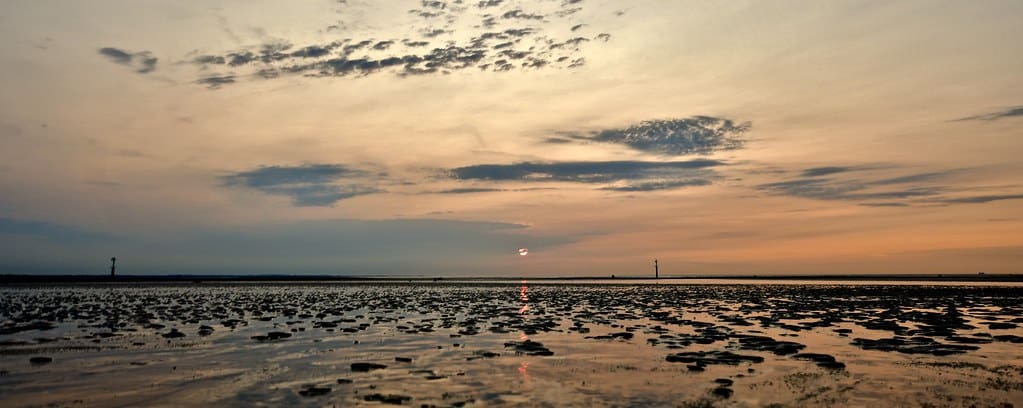
Get your blood pumping with the long stretch of these fine sandy beaches!
The Côte Fleurie stretches from Honfleur to Merville-Franceville for around 45 kilometers.
The moniker “Coast of Flowers” alludes to the area’s natural beauty.
Meadows and apple orchards dot the scenery, punctuated by spectacular cliffs and fine-sand beaches.
Deauville to Cabourg is a charming stretch of road (20 kilometers).
The term was given to the flower-filled landscape beyond the coastal hills and the gardens of the 19th-century beachfront villas built during the Belle Époque by Raymond Coustant d’Yanville, president of the regional horticultural organization, in 1903.
As tourism grew in the late 19th and early 20th centuries, the French coastline was given a variety of titles to differentiate its various landscapes.
The Vallées de la Dives and the Vallée de la Touques were two river valleys divided by low cliffs and vast stretches of sandy beach.
Have a relaxation, enjoy the beach breeze as you drive along the way, or walk on the shore of Côte Fleurie!
Address: Merville-Franceville-Plage
Deauville
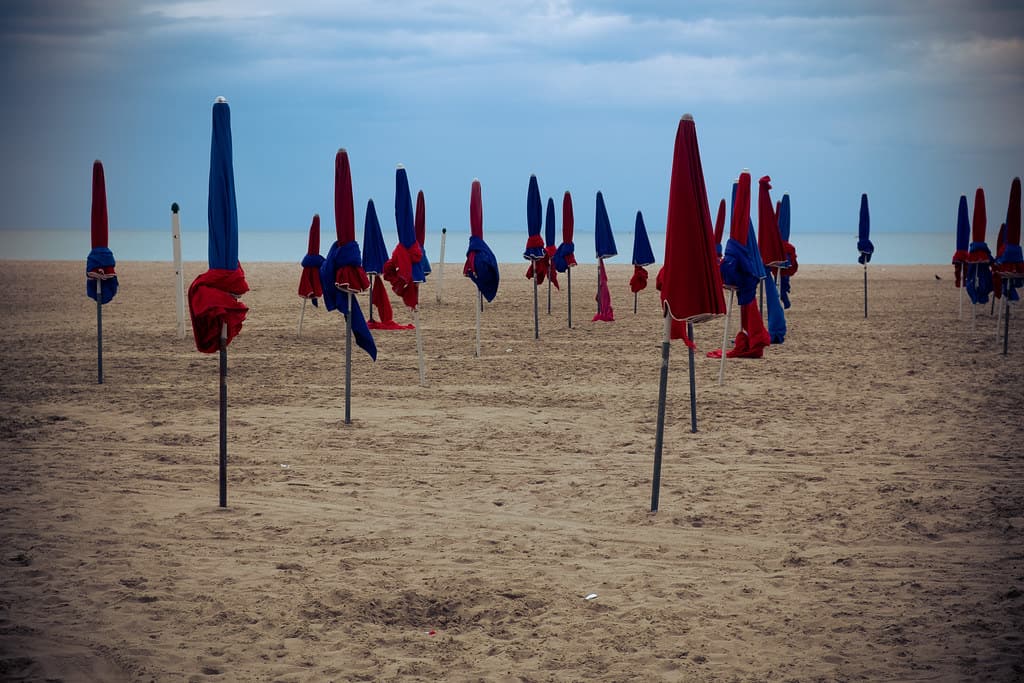
Soak up the sun while seated beneath a beach parasol.
Deauville’s history dates back to 1060, when seigneur Hubert du Mont-Canisy ruled over the splendid region of Auevilla.
Hubert du Mont-Canisy departed for England in 1066, following William the Conqueror.
The land around Deauville is the central horse breeding region in France, with numerous stud farms and the Deauville-La Touques Racecourse.
As a result, the city has ties to Lexington, Kentucky, and County Kildare, Ireland, both global leaders in thoroughbred horse breeding.
Every year in mid-August, Deauville hosts the renowned Ventes de Deauville yearling auction.
Deauville has been a popular coastal resort in Normandy since the 19th century.
This beautiful vacation area is still regarded as one of France’s best beach getaways.
Two kilometers of sandy shoreline and a promenade (boardwalk) for seaside strolls can be found along the seafront.
During the peak season, lifeguards are on duty every day (July and August).
Parasols, lounge chairs, and old-fashioned striped cabanas are available for rent, befitting a beautiful beach location.
An old town with lots of things to do! Visit Deauville now and experience the excitement!
Address: Calvados, Normandy, France
Étretat Cliffs
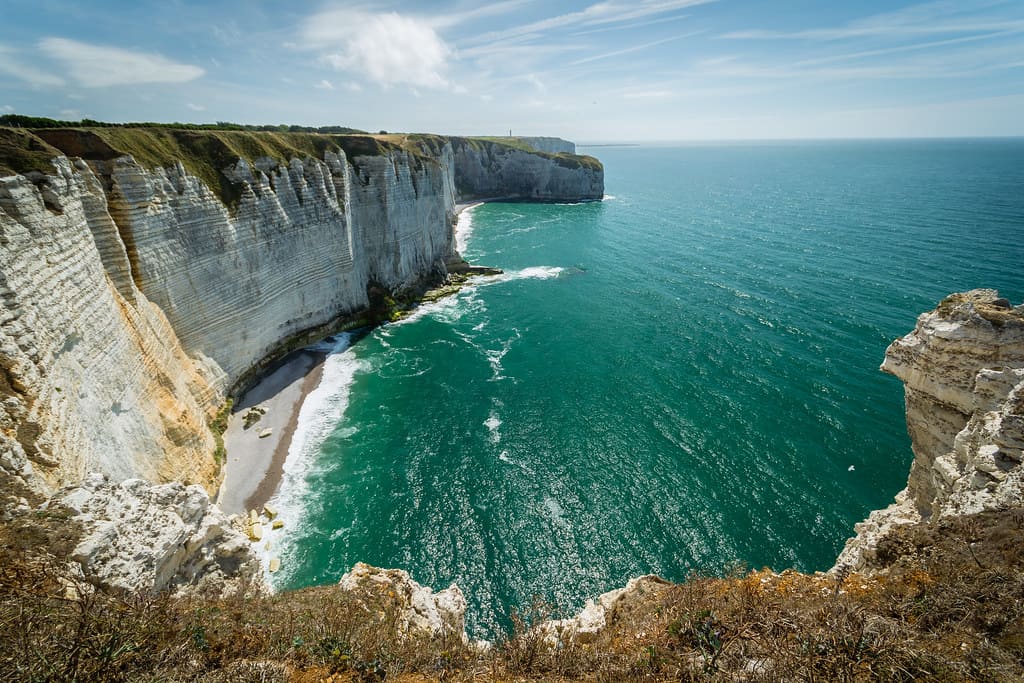
Go hiking on Etretat’s Cliffs!
As a little English Channel resort town noted for its white chalk cliffs, natural arches, and the “needle,” a conical feature just offshore, Etretat is a popular tourist destination.
Views of the surrounding landscape are breathtaking from the cliff-top perch.
It’s been a popular destination for artists like Claude Monet and Guy de Maupassant for centuries because of the magnificent white chalk cliffs.
Some people compare these to the White Cliffs of Dover because of their pristine whiteness.
Viewing the stunning scenery from atop cliffs is possible, and strolling along a beach.
At Étretat’s beaches, sunbathers can soak up the summer sun while fishers collect fresh seafood in the region’s restaurants.
There are three natural arches and a 55-meter needle on the cliffs on either side of the village and its pebble beach.
Be sure to climb both the cliffs to have a spectacular view and don’t forget to explore the town!
Address: 76790 Étretat, France
Fécamp
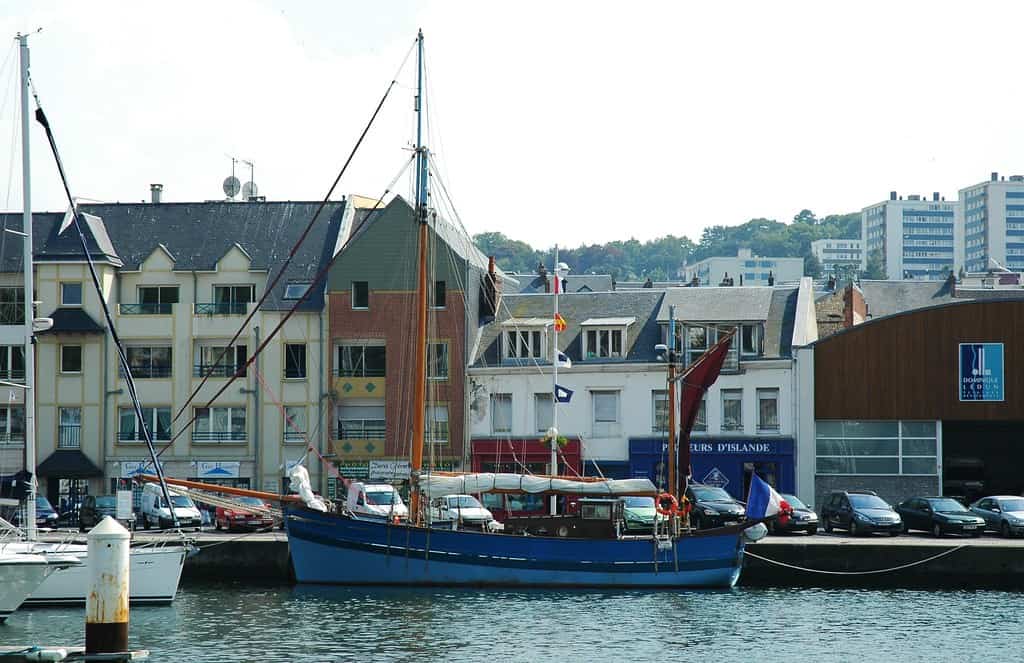
A favorite beach vacation destination by travelers!
For a perfect vacation spot for unwinding and taking it easy, Fécamp ranks high on the list of options in Normandy.
Fécamp was one of France’s earliest coastal resorts when it opened in 1832, and it was famous for drawing in a lot of people from high society.
Sunbathers and socialites alike can take advantage of the ocean’s scenic beauty.
This medieval beach town, framed by the spectacular white cliffs of the Alabaster Coast, served as the residence of the Dukes of Normandy until the year 1204.
Fécamp is a fishing port, a seaside resort, a site of artistic and religious pilgrimage, and the home of the famous Benedictine liqueur.
It oozes genuineness and a way of life related to the sea.
The neo-Gothic and neo-Renaissance-styled Palais Bénédictine (Benedictine Palace) was built for Alexandre Le Grand.
The entrepreneur who developed the alcoholic herbal drink Benedictine and made a significant impact in the center of Fécamp.
Find out Normandy’s best-kept secrets by planning your trip to Fécamp.
Address: Seine-Maritime, Normandy, France
Honfleur Harbor
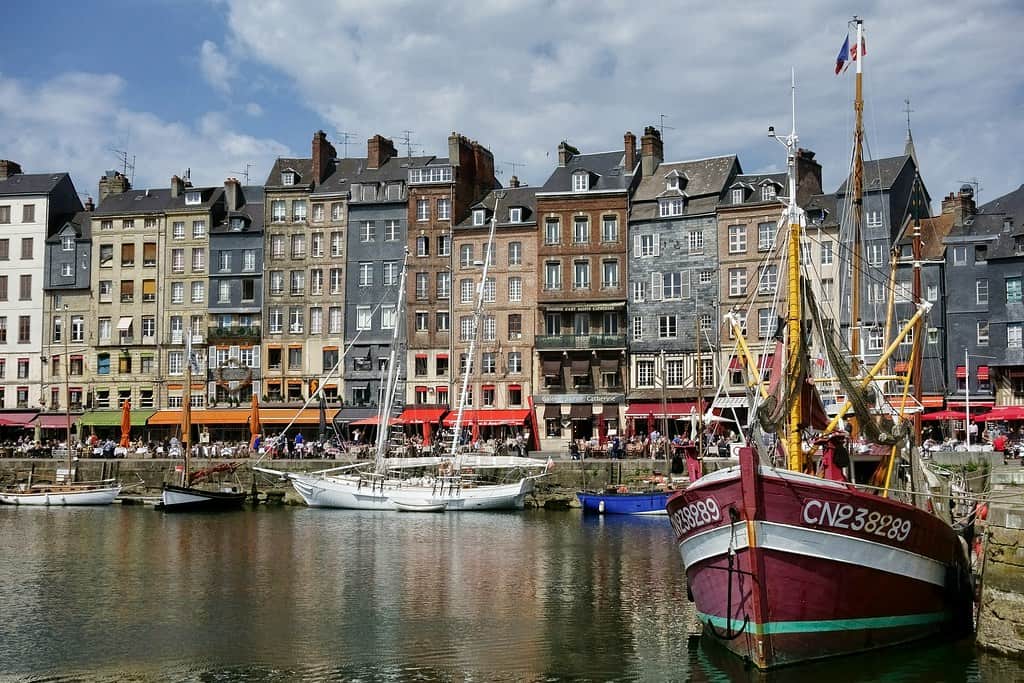
Wander around the old harbor on the Seine estuary.
The town is located approximately 25 kilometers away from Le Havre.
It is known for its charming half-timbered homes, cobblestone streets, and old stone structures.
The view of the harbor that you can have from the Quai Saint-Etienne will spoil your heart with its exquisite beauty.
The view takes in the tall, thin slate-clad residences situated behind the masts of moored yachts.
The slate facades of the homes in Honfleur, which were so beloved by the Impressionist painters of the 19th and 20th centuries, have made the city’s harbor a popular tourist destination.
This thousand-year-old town was essential as a maritime commerce hub during the Middle Ages.
After walking around the port area, you should visit Saint Catherine’s, built in the 15th century and is the largest wooden church in all of France.
The two halves of the church are separated by a bell tower that features a statue of Catherine clutching a wheel and a sword at its top.
Enjoy a delicious seafood dinner in Honfleur, where scallops are renowned!
Address: Calvados, Normandy, France
Le Havre
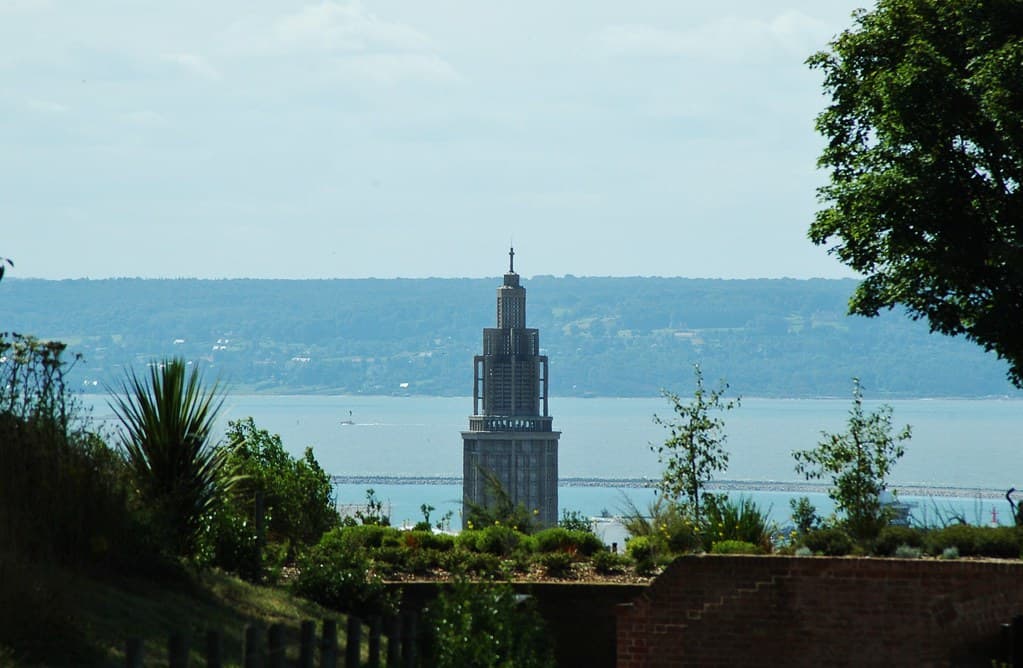
It is where the Seine River meets the English Channel.
Le Bec-Hellouin, one of Normandy’s most picturesque settlements, is included in Plus Beaux Villages de France (Most Beautiful Villages of France).
In a quiet valley secluded away from the rest of the world, this small country town is surrounded by lush greenery and trees.
An antique church, the Eglise Saint-André, can be found in the center of the lovely village of Le Bec-Hellouin.
It is known for its abundance of old-world charm thanks to its flower-decorated half-timbered buildings.
Le Havre took a daring approach after the war by embracing the potential of concrete.
It was in contrast to the decision made by some cities that were bombed during the war to restore their older architecture.
The city’s historic core has undergone a drastic transformation, overseen by architect Auguste Perret, which has been designated a UNESCO World Heritage Site.
A visit to the André Malraux Museum of Modern Art is a must if you want to see some of the finest examples of French Impressionism in the country, including works by Degas, Renoir, Manet, Gauguin, and Monet.
Catch a glimpse of the town’s notable landmarks that features reinforced-concrete architecture on your visit.
Address: Seine-Maritime, Normandy, France
Memorial Museum of the Battle of Normandy
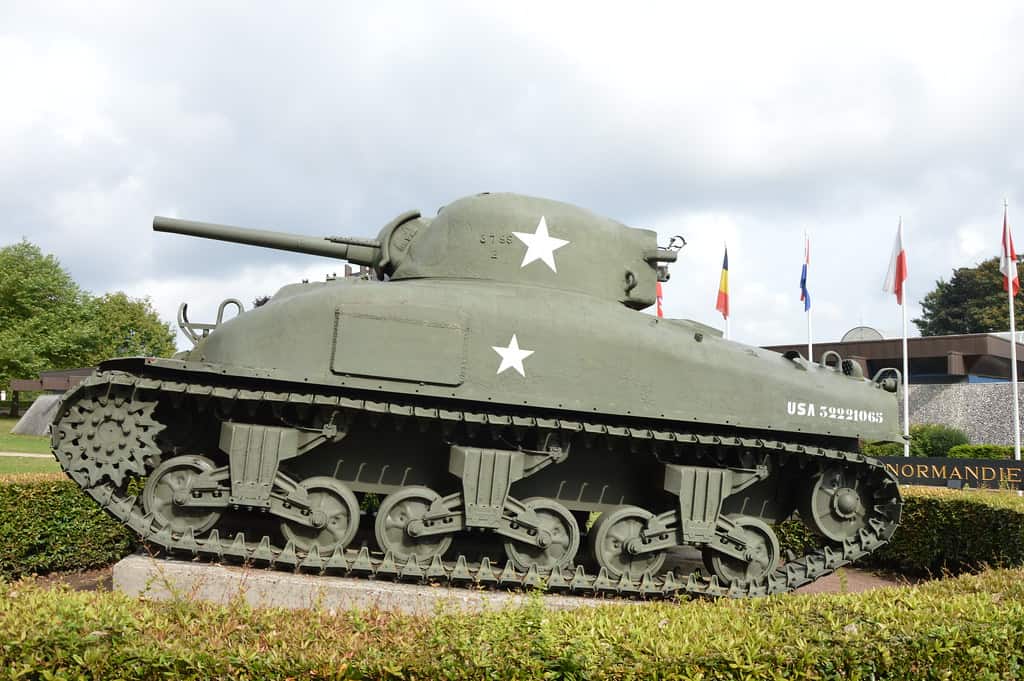
An authentic gateway to the D-Day Landing Beaches gives you a fascinating look back in time.
A British cemetery from World War II can be found in Bayeux, in addition to the Memorial Museum of the Battle of Normandy.
From the advance of the Allied soldiers to D-Day on June 6th, 1944, through Paris’ liberation in 1944, the museum’s 2,300-square-meters of exhibition space tells a compelling story of the Normandy Campaign.
The museum, which opened in 1981, is located in the center of Bayeux, the first French town to be liberated during the Battle of Normandy.
Also, the museum is near both the memorial garden for war reporters and the British cemetery. This area of the town is referred to as the “memorial center,” and its name is Liberty Alley.
It is possible to travel back in time by watching “Normandy ’44, Decisive Victory in Western Europe,” an archive video, and visiting the Falaise-Chambois Pocket large diorama as part of the museum experience.
During the conflict, bulldozers, jeeps, and rifles were among the military equipment exhibited at the Landing Beaches Museum.
Learn more about the history of World War II while honoring the memory of fallen civilians and soldiers.
Address: Bd Fabian Ware, 14400 Bayeux, France
Mont Saint-Michel
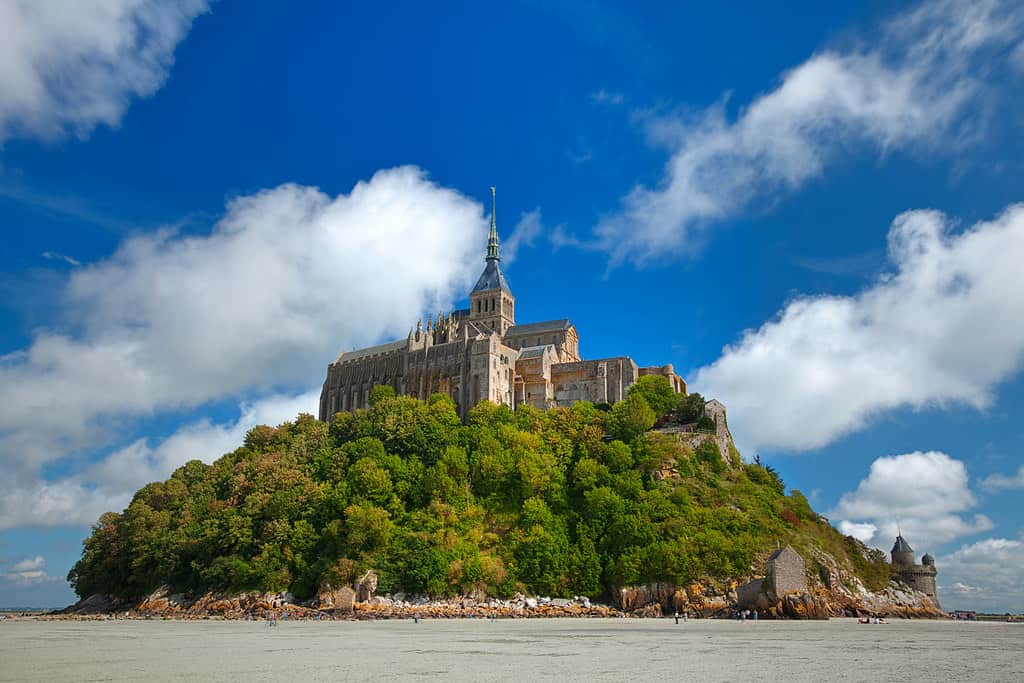
The Wonder of the West
Mont Saint-Michel is a UNESCO World Heritage Site because of its importance as a medieval pilgrimage site.
This designation protects both the Abbey of Saint-Michel and the bay of Saint-Michel.
The Archangel Michel, chief of the celestial military, authorized the construction of a modest church on an isolated hill mere yards off the coast of France in the 8th century.
A Benedictine abbey would be built on the site in the thirteenth century.
Mont Saint-Michel, one of Normandy’s most distinctive tourist attractions, Mont Saint-Michel, was born out of that complex.
A wall was built during the Hundred Years War to keep out the enemy.
The rocky island of Mont Saint-Michel may be found off the shore of France’s northwestern coast in Normandy.
The island is surrounded on all sides by extensive mudflats and is subject to some of the strong tides in all of Europe.
As pilgrims prepare to traverse the ominous Bay of Saint-Michel, they are drawn by the impressive Gothic spires stretching towards the heavens.
You can make a “traditional crossing” (a pilgrimage by foot) of Mont Saint-Michel during low tide, and one road is the only means of access when it’s high tide.
Spend some time walking around the adorable village that grew up in the Middle Ages.
Address: Manche, Normandy, France
Old Rouen
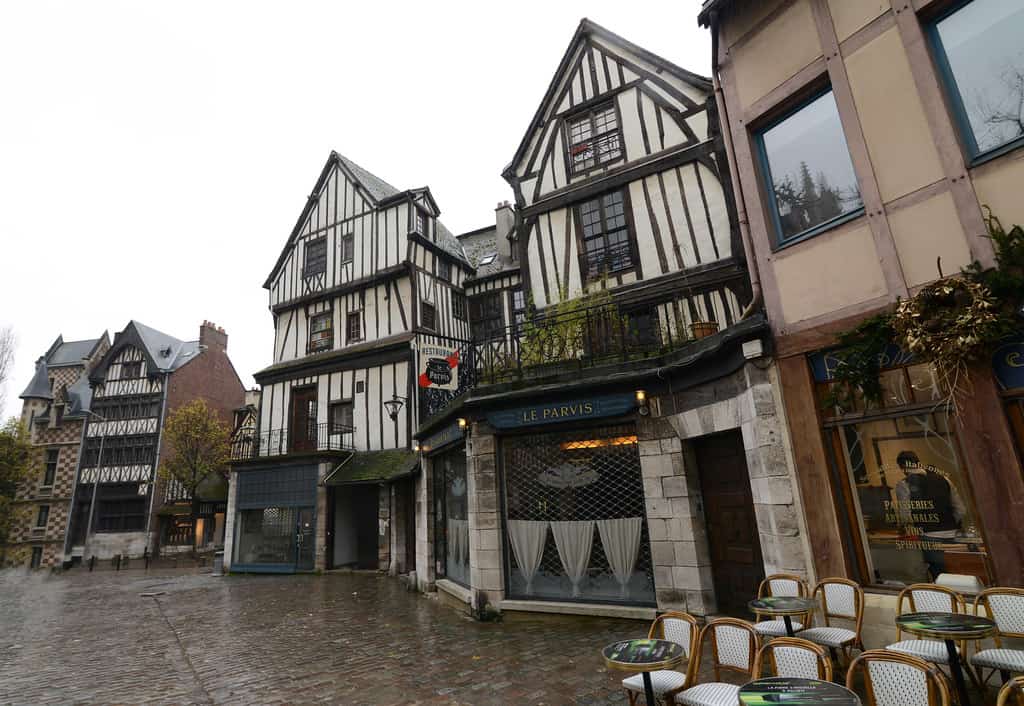
Historic, dynamic, and culturally significant: Rouen is Normandy’s capital city.
Rouen’s cobblestone pathways, surrounded by antique Maisons à colombages (half-timbered houses), provide a charming setting for a stroll around the city’s historic core.
Everywhere you look, you’ll see Gothic churches, many of which are architectural wonders from the Middle Ages.
Le Gros-Horloge clock tower, located in the heart of Rouen, is often regarded as the city’s most distinctive landmark.
It is an astronomical clock constructed in 1389 and is known for its exquisite decoration.
It is considered one of the oldest clocks in Europe that is still in functioning condition.
A globe displays the moon’s various phases just above the clock’s face.
The prevalence of pictures of sheep demonstrates the significance of the wool trade.
Pay a visit to the museum that celebrates the life of Joan of Arc, a figure beloved throughout France as a national hero.
Enjoy the ambiance and hang around the medieval center of Rouen.
Address: Rue du Gros Horloge, 76000 Rouen, France
Suisse Normande (Norman Switzerland)
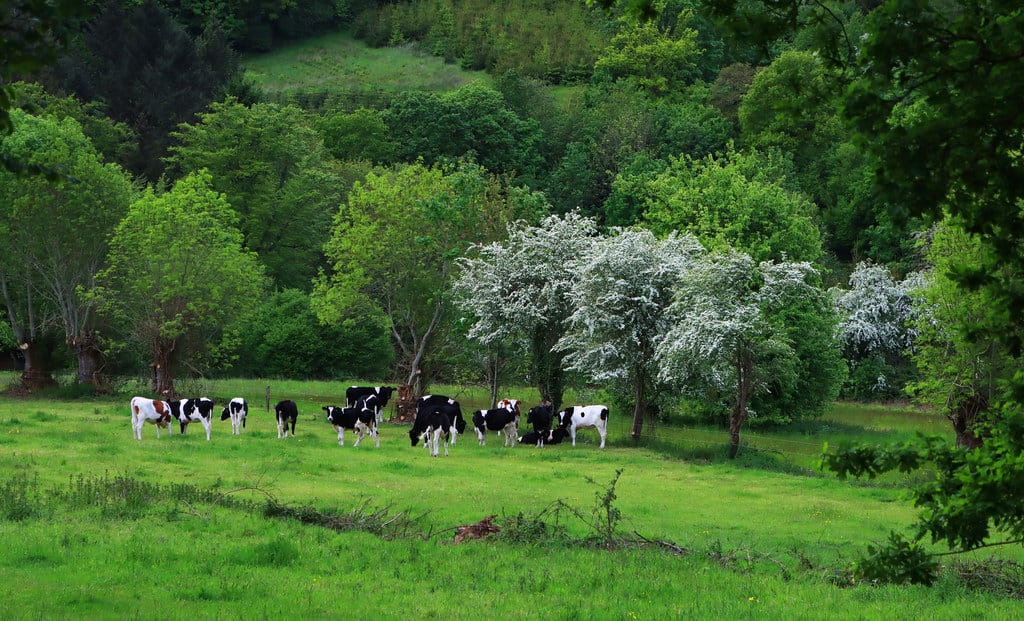
It’s time to get to know Normandy in all its glory – from its rich legacy and history to its famous people and tourist sites to its culinary traditions and know-how.
This wild and hilly stretch of the Orne valley to the south of Caen is fantastic for outdoor activities, with dramatic panoramic views that you will fall in love with.
Whether you are into canoeing, kayaking, hiking, or rock climbing, this stretch of the Orne valley is fantastic for all of these activities.
Suisse Normande is an area famous for its stunning meanderings and narrow gorges created by the Orne river.
These are the highest points in Normandy because of the region’s many hills that rise above 1,000 feet.
The Orne River attracts amateur and professional canoeists to the Suisse Normande, which offers a wide range of active sports.
Canoe polo world championships were held in the vicinity in 2014.
Some people choose to fish in the calmer waters, while others prefer to climb the cliffs and hills above them.
You’ll undoubtedly experience a greater sense of connection with nature if you visit the Suisse Normande.
Address: Border region of the departments Calvados and Orne, Normandy, France

